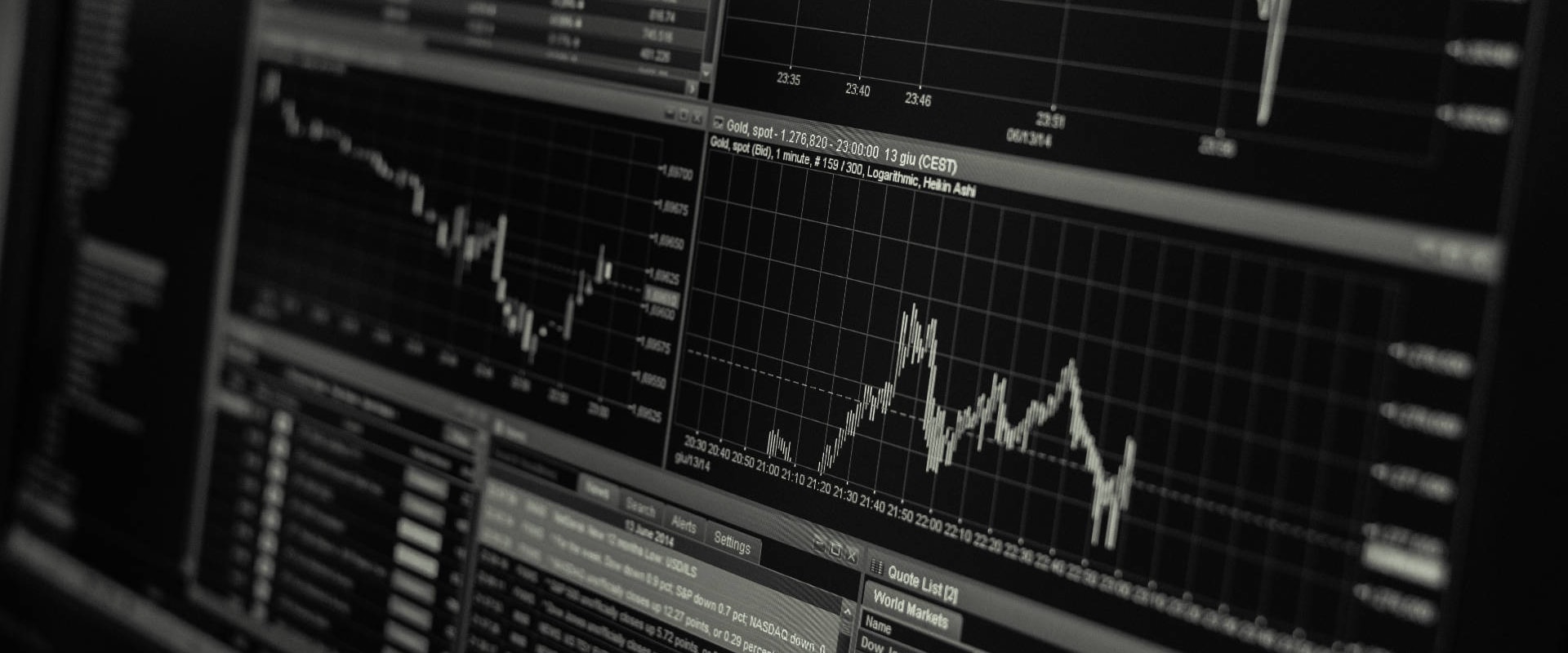Breakout Trading Strategy in Forex Trading
Are you an aspiring forex trader looking for effective strategies to maximize your profits? If so, you've come to the right place. In this article, we will delve into the breakout trading strategy, a popular approach utilized by traders to capitalize on potential price movements in the forex market. By understanding the fundamentals of breakout trading and implementing it wisely, you can enhance your chances of success in forex trading. So, let's dive in!
1. Introduction: What is Breakout Trading?
Breakout trading is a strategy employed by traders to identify key price levels at which the market is expected to experience a significant surge in volatility and price movement. The concept behind breakout trading is to enter a trade when the price breaks above or below a predefined level of support or resistance. The breakout is an indication that the market momentum is shifting, presenting an opportunity for traders to profit from substantial price fluctuations.
2. Identifying Support and Resistance Levels
Support and resistance levels play a crucial role in breakout trading. Support refers to a price level at which the demand for a particular currency is strong enough to prevent it from declining further. Resistance, on the other hand, represents a price level at which the supply of the currency outweighs the demand, causing the price to stall or reverse.
To identify support and resistance levels, traders employ various technical analysis tools such as trend lines, moving averages, and pivot points. By studying historical price data and recognizing patterns, traders can pinpoint potential breakout levels and make informed trading decisions.
3. Entry and Exit Points
Determining entry and exit points is vital in breakout trading. When a breakout occurs, traders can enter a trade in the direction of the breakout, anticipating further price movement. It's crucial to wait for a confirmed breakout and not enter prematurely, as false breakouts can occur.
Exit points are equally important to protect profits and manage risks. Traders often use stop-loss orders to limit potential losses if the market moves against their position. Additionally, setting profit targets based on support and resistance levels allows traders to secure gains before a potential reversal occurs.
4. Types of Breakouts
There are three primary types of breakouts in forex trading: continuation breakouts, reversal breakouts, and range breakouts. Let's explore each type briefly:
a) Continuation Breakouts
Continuation breakouts occur when the price breaks out of a consolidation phase and continues in the same direction as the existing trend. Traders utilize continuation breakouts to join the market trend and capitalize on the momentum.
b) Reversal Breakouts
Reversal breakouts transpire when the price breaks out of a consolidation phase and reverses its previous trend. Traders employing reversal breakouts aim to catch trend reversals early and profit from significant price movements in the opposite direction.
c) Range Breakouts
Range breakouts transpire when the price breaks out of a well-defined price range. Traders utilize range breakouts to identify potential breakout points outside the range and take advantage of the subsequent price volatility.
5. Breakout Trading Strategies
Various breakout trading strategies can be implemented based on individual preferences and market conditions. Let's explore three popular strategies:
a) Breakout Pullback Strategy
The breakout pullback strategy involves waiting for a breakout to occur, followed by a temporary pullback to the breakout level. Traders enter the trade during the pullback, anticipating a resumption of the breakout movement. This strategy provides an opportunity to enter the market with a favorable risk-reward ratio.
b) Breakout Retest Strategy
In the breakout retest strategy, traders wait for the breakout to occur and then observe whether the broken support or resistance level is retested. If the retest confirms the breakout, traders enter the trade in the direction of the breakout. This strategy helps traders avoid false breakouts and increases the probability of a successful trade.
c) Breakout with Fibonacci Strategy
The breakout with Fibonacci strategy combines the principles of breakout trading with Fibonacci retracement levels. Traders identify a breakout and then use Fibonacci retracement levels to determine potential entry and exit points. This strategy helps traders align breakout trading with key support and resistance levels derived from the Fibonacci sequence.
6. Risk Management in Breakout Trading
Effective Risk Management is crucial in breakout trading to protect your capital and minimize potential losses. Traders often utilize position sizing techniques, such as risking a fixed percentage of their trading account on each trade. Additionally, setting stop-loss orders and adhering to them strictly helps control risk and prevent significant drawdowns.
7. Backtesting and Practice
Before implementing breakout trading strategies in live trading, it is essential to backtest them using historical price data. Backtesting allows traders to assess the performance of their strategies over a significant period and make necessary adjustments. Moreover, practicing breakout trading in a simulated trading environment can help traders gain experience and build confidence.
8. Common Mistakes to Avoid
While breakout trading can be lucrative, it is essential to avoid common mistakes that can negatively impact your trading performance. Some common mistakes include entering trades too early, failing to use proper risk management techniques, and chasing breakouts without waiting for confirmation. By staying disciplined, patient, and adhering to your trading plan, you can avoid these pitfalls and improve your trading results.
9. Advantages and Disadvantages of Breakout Trading
Breakout trading offers several advantages, such as the potential for substantial profits in volatile market conditions and the ability to catch trend reversals early. However, it also carries certain risks, such as false breakouts and increased market volatility during breakout periods. Traders must carefully assess the advantages and disadvantages and develop a suitable risk-reward profile that aligns with their trading goals.
Breakout trading strategy is a widely popular and highly effective technique used in the Forex market to identify and capitalize on price movements. It involves the analysis of past price movements to predict potential future breakouts. This comprehensive guide will provide a detailed overview of breakout trading strategy, outlining its principles, benefits, and how to apply it in the Forex market for successful trading. Moreover, we will discuss the various types of breakout strategies, including trend following strategies, and how they can be used to maximize profits.
With this guide, you will gain an understanding of how breakout trading strategy works and how to use it to increase your chances of making a profit from the Forex market. The breakout trading strategy is based on the idea that once the price breaks out of its current range or trend, it will continue in that direction. The goal of the strategy is to buy or sell at the beginning of a new trend and capitalize on the momentum. To successfully trade breakouts, traders must be able to identify potential areas where the price could break out and have an understanding of when to enter and exit a trade. When it comes to identifying potential breakout areas, traders often look for support and resistance levels.
Support levels indicate the lower end of a range-bound market, while resistance levels indicate the upper end. These levels can be identified by looking at historical price action as well as technical indicators such as moving averages and Bollinger Bands. In addition to identifying potential breakout areas, it is important to understand when to enter and exit a trade. Traders often use the principle of buying low and selling high when trading breakouts.
This means they will enter a trade when the price breaks out of its current range and then exit when it reaches a new high or low. Traders can also use stop-loss orders to limit losses if the price moves in an unexpected direction. The breakout trading strategy can be used in any timeframe, from intraday to long-term. However, it is important to note that breakouts can be difficult to predict accurately and are often subject to false signals.
Therefore, it is important for traders to practice risk management techniques such as setting stop-loss orders and limiting their exposure to any one trade. Overall, the breakout trading strategy is a simple yet effective way for traders to take advantage of volatile market conditions. By correctly identifying potential breakout areas and understanding when to enter and exit trades, traders can capitalize on market movements and potentially generate profits.
Risks of Breakout Trading Strategy
Although breakout trading can be profitable, there are some risks associated with the strategy. Firstly, breakouts can be difficult to predict accurately and are often subject to false signals.This means that traders must be aware of the potential for losses if the price moves in an unexpected direction. Secondly, breakouts can lead to rapid price movements which can cause losses if trades are not managed correctly. Traders should also be aware of the risks involved with having a large open position that is subject to sudden and large changes in market conditions. Finally, it is important to remember that breakouts can also be used by market makers to manipulate prices, so traders should be cautious when trading breakouts.
Benefits of Breakout Trading Strategy
Breakout trading is a popular strategy among forex traders as it offers a number of benefits.The primary benefit is that it allows traders to capitalize on market movements. As the price breaks out of its current range or trend, it creates opportunities for profits. The strategy also offers flexibility as it can be used in any timeframe from intraday to long-term. Finally, it is relatively easy to learn and understand, making it an ideal strategy for beginner traders. One of the major advantages of breakout trading is that it allows traders to take advantage of volatile market conditions.
When prices break out of their range or trend, they often move quickly in a certain direction, and traders can use this to their advantage. Additionally, breakout trading does not require a lot of technical analysis, so it is relatively straightforward to set up. Another benefit of breakout trading is that it can be used in a variety of timeframes. Traders can use it on short-term intraday charts or long-term weekly or monthly charts. This allows traders to tailor their strategies according to their own preferences and risk tolerance.
Furthermore, breakout trading strategies are simple to understand and execute, making them an ideal option for beginner traders. Finally, breakout trading offers the potential for large profits due to its high reward-to-risk ratio. When done correctly, breakout trades can yield large returns with minimal risk. This makes it an attractive option for those looking to maximize their profits. Breakout trading is a useful trading strategy for forex traders who are looking to take advantage of volatile market conditions. While it has the potential to generate profits, it also comes with risks that must be carefully considered before entering a trade.
By using the right technical indicators, setting up appropriate risk management strategies, and remaining patient, traders can increase their chances of success with breakout trading.
In conclusion, breakout trading is a powerful strategy that can significantly enhance your forex trading results. By correctly identifying breakout levels, understanding different types of breakouts, and employing effective trading strategies, you can capitalize on price movements and increase your profitability. However, it is essential to practice proper risk management, avoid common mistakes, and continuously improve your trading skills. Remember, consistency, discipline, and adaptability are key traits of successful breakout traders.
FAQs (Frequently Asked Questions)
1. How much capital do I need to start breakout trading?
The required capital for breakout trading depends on various factors, including your risk tolerance and trading strategy. It is advisable to start with an amount you can afford to lose and gradually increase your capital as you gain experience and confidence.
2. Can breakout trading be applied to other financial markets apart from forex?
Yes, breakout trading can be applied to various financial markets, including stocks, commodities, and cryptocurrencies. The underlying principles of breakout trading remain the same across different markets.
3. Are there specific timeframes that work best for breakout trading?
The choice of timeframe depends on your trading style and preferences. Breakout trading can be implemented on short-term, medium-term, or long-term timeframes. It's crucial to align the timeframe with your trading strategy and risk management approach.
4. How do I avoid false breakouts in breakout trading?
To avoid false breakouts, it is essential to wait for confirmation before entering a trade. Look for additional indicators or patterns that support the breakout, such as increased volume or candlestick formations.
5. Can automated trading systems be used for breakout trading?
Yes, automated trading systems can be programmed to execute breakout trading strategies. However, it's crucial to thoroughly test and optimize the system to ensure its effectiveness in different market conditions.
Incorporating the breakout trading strategy into your forex trading arsenal can provide you with a competitive edge in the market. Remember to stay disciplined, continuously educate yourself, and adapt to changing market conditions. With practice and perseverance, you can master the art of breakout trading and achieve your financial goals in the exciting world of forex trading.












Leave Reply